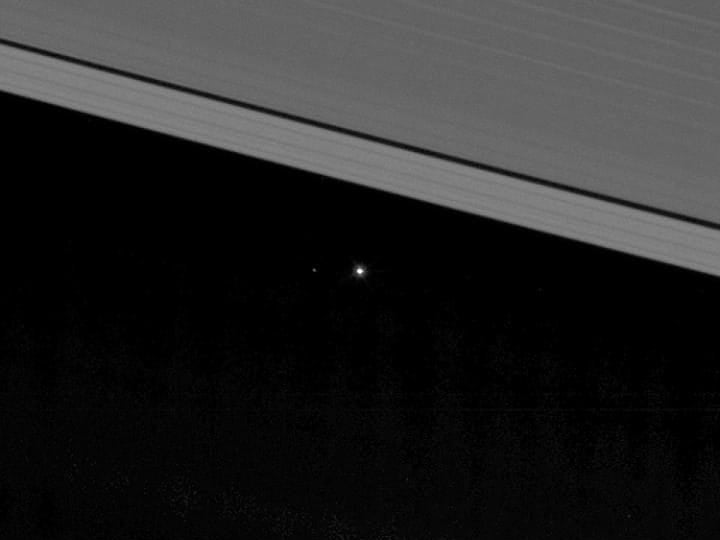Cassini Spacecraft: Nasa probe's groundbreaking dive through Saturn's planetary rings
Today's Google Doodle shows the unmanned orbiter at work snapping pictures of our solar system's second-largest planet

Your support helps us to tell the story
From reproductive rights to climate change to Big Tech, The Independent is on the ground when the story is developing. Whether it's investigating the financials of Elon Musk's pro-Trump PAC or producing our latest documentary, 'The A Word', which shines a light on the American women fighting for reproductive rights, we know how important it is to parse out the facts from the messaging.
At such a critical moment in US history, we need reporters on the ground. Your donation allows us to keep sending journalists to speak to both sides of the story.
The Independent is trusted by Americans across the entire political spectrum. And unlike many other quality news outlets, we choose not to lock Americans out of our reporting and analysis with paywalls. We believe quality journalism should be available to everyone, paid for by those who can afford it.
Your support makes all the difference.Today’s animated Google Doodle celebrates Nasa’s Cassini spacecraft, which today begins the final leg of its journey between the rings of Saturn.
The unmanned probe, a collaboration between the US and Italian space agencies, was launched on 15 October 1997 and arrived within Saturn’s orbit 13 years ago after completing a voyage that saw it pass both Venus and Jupiter.
The Cassini has since circled the planet in order to photograph its surface and give astronomers a better understanding of its atmospheric make-up, magnetosphere and icy moons.
It will pass between the icy sheets of Saturn’s rings 22 times over the coming months – continuing the invaluable documentary work that has seen it send back the first picture of earth taken from between the rings.
‘No spacecraft has ever gone through the unique region that we’ll attempt to boldly cross,’ said Thomas Zurbuchen of the Science Mission Directorate at Nasa’s headquarters in Washington, D.C.
‘What we learn from Cassini’s daring final orbits will further our understanding of how giant planets and planetary systems everywhere, form and evolve. This is truly discovery in action to the very end.’
The craft carries an arsenal of scientific instruments on board used to gather data on Saturn by detecting wavelengths invisible to the human eye.
Among its tool box is the Huygens probe, which was successfully parachuted onto the surface of Titan, the planet’s largest moon, in 2005, recording a wealth of important information.
Among the orbiter’s most important findings was a discovery made just two weeks ago, in which chemical reactions were detected beneath the frozen tundra of the moon of Enceladus, suggesting that Saturn hosts some of the most hospitable conditions to nurturing life in our solar system.

Cassini also reported back that weather conditions on Titan resemble those we experience on earth, not unlike the wind, rains and stormy seas imagined in Christopher Nolan’s recent science-fiction film Interstellar (2014).
The probe was named in honour of 17th century Italian astronomer Giovanni Domenico Cassini, who first noted that the rings encircling Saturn were divided rather than a solid whole in 1675.
It is projected to complete its mission on 15 September this year, 142 days from now, when it drifts into the planet’s gravitational pull and begins the ‘death dive’ that will see it burnt up on descent - a sad end for a bot that has cast new light on one of the darkest corners of our galaxy but one necessitated by its running out of the propellant fuel used to steer it.
Join our commenting forum
Join thought-provoking conversations, follow other Independent readers and see their replies
Comments